Easter week welcomes spring and everyone wishes to go out and live outdoor experiences. Perhaps discovering new things or rediscovering them with different eyes, less distracted than when we were children or teenagers. Here are the 10 most visited destinations in Italy during Easter and Easter Monday, according to last year's data from the Ministry of Cultural Heritage, ready to be full of tourists again this year when the holiday falls early, on March 31st. And here are 5 places we recommend you visit, close to the busiest cities but less crowded.
A very popular holiday in Italy, Easter is much more than a week's holiday and free days available. There is the religious spirit that accompanies the three days of the Passion of Christ; there is a desire for art and culture that crowds the historic centers of villages and cities; there is the tradition of a trip out of town on Easter Monday, the happiest and light-hearted Monday of the year. It is the festive air, what the Germans - faithful lovers of the Easter holidays - call Osterlachen, the cheerful and carefree laughter of festive days.

Easter, one week but three distinct moments of celebration
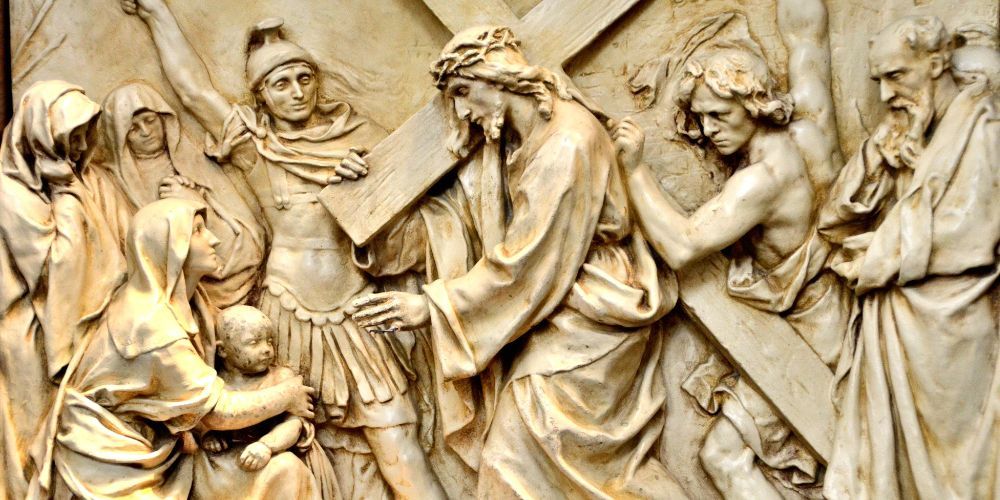
If you want to live the real Italian Easter, then we must distinguish the week into at least three moments of celebration: from Holy Thursday to Holy Saturday it is a time of "passion" and it is easy to come across, even in the smallest towns, processions, religious events and rites of the Christian faith. They all take place outdoors, through the streets of the historic centres, the most famous and touching event is undoubtedly the Via Crucis in Rome on Good Friday, but celebrations of this rite take place in many Italian cities. Characteristic are the processions of hooded faithful, from Sorrento to Gubbio, up to Iglesias and Alghero, as well as flagellants in Catanzaro.
Easter Sunday on one hand is dedicated to the traditional lunch, on the other hand to the discovery and wonder, therefore to visiting museums, monuments and archaeological sites. It is precisely the feelings of "discovery" and "wonder" that push children to break chocolate eggs, as well as to "hunt" for eggs according to the Anglo-Saxon and French tradition, going and finding them in the garden or at home. It is on this day that the 10 most visited sites and attractions in Italy attract the greatest number of tourists. Therefore expect high attendance and long queues at museums. It is useful to take a look at the 5 alternatives that we suggest in the main Italian art cities
Easter Monday is traditionally dedicated to picnics, outdoor experiences and excursions in the mountains, sometimes also savoring the first warmth on the beaches of Italy. It's the day when it's a must to eat out, whether it's barbecues with friends or simple sandwich-based picnics, it makes no difference. Farmhouses are full, but so are fast-food places in art cities and there are more and more of them who, if they can, extend the holiday after Easter Monday to Tuesday and beyond.
10. Gallery of the Academy in Florence
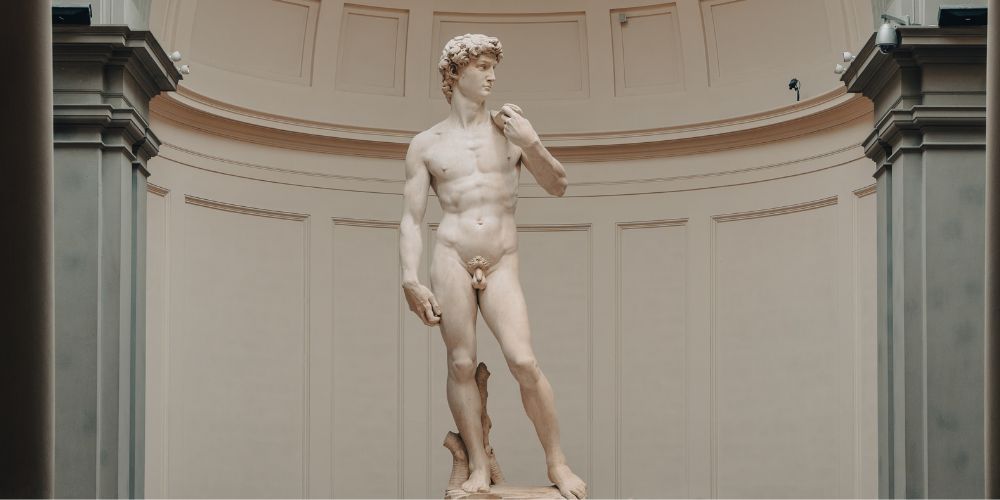
David Michelangelo's masterpiece in Galleria dell'Accademia
Last year it exceeded the threshold of two million visitors, i.e. 40% more than in 2022. At Easter alone, 7,223 tickets were sold and this year too, bookings at the Galleria dell'Accademia in Florence are booming. There is a more than convincing reason to flock to the second most visited museum in Florence: Michelangelo's David is here!
The most famous sculpture in the world, which has its alter ego in the form of a copy in Piazza della Signoria, dominates a corridor of the museum, which also houses other sculptures by Michelangelo Buonarroti. The Accademia Gallery also houses an art gallery with late medieval works from the thirteenth to the early fifteenth century, among which paintings by Giotto, Botticelli, Filippino Lippi and Pontormo stand out. There is also the collection of the “Luigi Cherubini” Conservatory of Florence, with violas and cellos by Stradivari. The museum is located at the end of Via Ricasoli, coming from Piazza Duomo.
9. Castel SantʼAngelo in Rome
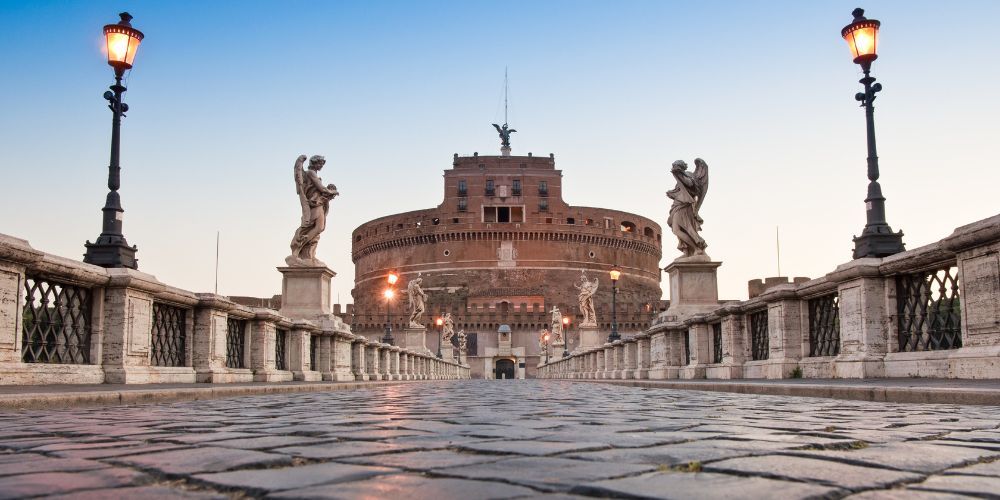
Castel Sant'Angelo
It is one of the more exploiting places in recent years. Castel Sant'Angelo saw the presence of almost 10.000 visitors in just two days, on Easter and Easter Monday 2023, a good start for the centenary that it is preparing to celebrate in 2025 as a National Museum. Built as the funeral mausoleum of Emperor Adriano (2nd century AD), the strong castle has had mixed fortunes: it was a fortress and a prison (it remained so until Rome was united to Italy in 1870), a papal residence and then a military history museum.
Adjacent to the Castle overlooking the Tiber there is the Passetto di Borgo, which the Romans called "er coridore". 800 meters long, it directly connects the fortress to the Vatican (allowing shelter and possible escape for the popes) and was refurbished on the occasion of the Jubilee of 2000. At the moment it is closed, but given that Rome is preparing to experience the new Jubilee - the opening of the Holy Door is scheduled for December 8 - the Passetto will be ready. An opportunity not to be missed to discover the Eternal City from another, magnificent perspective.
8. Royal Museums of Turin and Chapel of the Holy Shroud
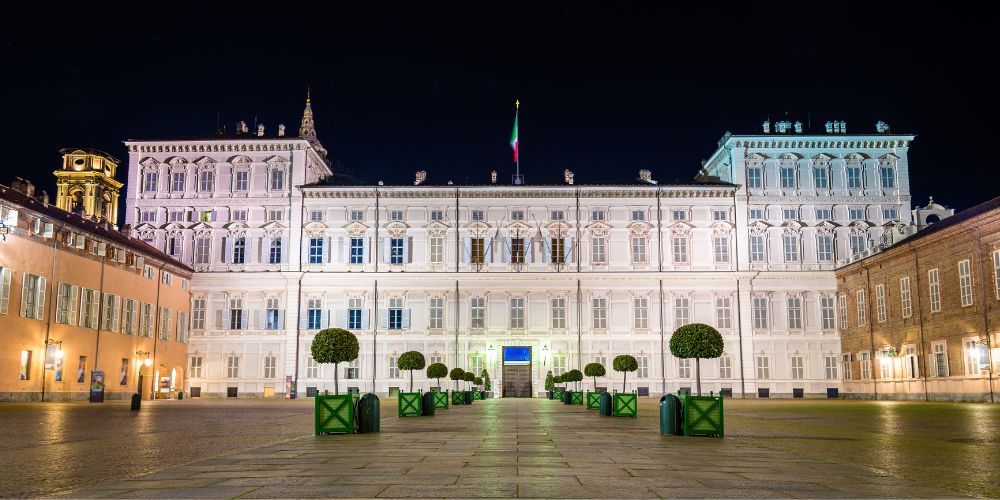
Royal Museums of Turin
With 14,236 visitors in Easter week 2023, the Royal Museums of Turin are carving out an increasingly significant slice of the city's vast cultural offering. We are talking about a very recent museum complex, born just in 2016 with the aim of integrating and enhancing the artistic and architectural heritage accumulated over the centuries of the reign of the Savoy. The Royal Museums of Turin include the Royal Palace, the Royal Gardens, the Royal Library and the Royal Armoury.
In the complex there is also the beautiful Galleria Sabauda, where seventeenth-century Caravaggio and Flemish works stand out (including Rubens, Van Djck and Guercino) and the Museum of Antiquities with bronze sculptures. The jewels in the crown are Palazzo Chiablese and the fabulous Chapel of the Holy Shroud, designed by the architect Guarino Guarini, renovated after a terrible fire and reopened in 2018. For Easter 2024, noteworthy is the opening on 23 March of the exhibition on Guercino (until 28 July) and from 28 March the famous Self-portrait of Leonardo da Vinci.
Thanks to the vastness of the site, the Royal Museums of Turin remain a good alternative to spend a few hours during the Easter holidays compared to the more famous Egyptian Museums and Mole Antonelliana (with the Cinema Museum).
Visit the Royal Museums of Turin with guided tour7. Caserta Royal Palace

Caserta, Royal Palace and gardens
Among the 10 most visited destinations at Easter there is always the Royal Palace of Caserta, the Reggia. Last year 4,762 tickets were sold and the following day more than double! For those who live in Campania it is known how the Royal Palace gardens are the place par excellence to spend Easter Monday. Once upon a time even cars could access the park and so on outings and picnics which are no longer permitted today, but in the imagination the Palace of Vanvitelli remains the Easter must-see of the region. Last year it exceeded one million visitors, a quarter of whom were young people aged up to 24.
On the other hand, the 123 hectares of park and the 3 kilometers of waterways encourage long walks along the Italian gardens which reach up to the complex of the Fountain of Venus and Adonis. But that's not all, there is the valuable English Garden which is basically a botanical garden in the gigantic vegetable garden of the park. Built near the Via Appia, the ancient communication route that linked nearby Capua to Rome, the Palace is much loved by cinema, it was the set in the first two episodes of the Star Wars saga (“The Phantom Menace” and “Attack of the Clones ”), but also of “Mission Impossible III” and “Angels and Demons”.
6. Vittoriano at Roma (Altar of the Fatherland)
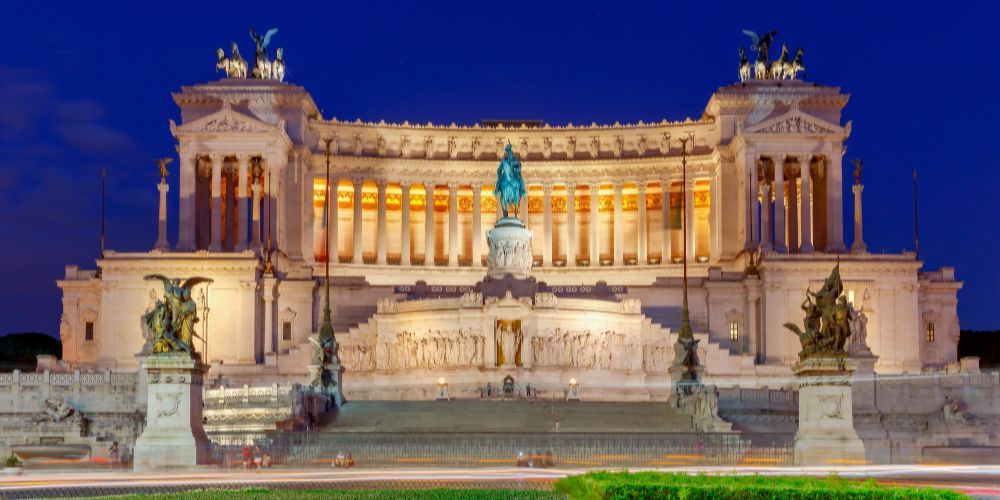
Vittoriano monument in Rome
You cannot say you have been to Rome without having looked towards the Vittoriano at least once. Its proud and majestic mass stands out on the side of Piazza Venezia which turns its back to the Roman Forum and houses, among other things, the Altar of the Fatherland and the tomb of the Unknown Soldier. It is imposing because this is what the Savoys wanted, who with the colossal monument intended to honor the first King of Italy Vittorio Emanuele II and the epic of the Risorgimento.
The Vittoriano was inaugurated on 4 June 1911 by King Vittorio Emanuele III, on the occasion of the Universal Exposition which celebrated the 50th anniversary of the Unification of Italy. The enormous statues represent the Italian cities and regions, but also the 6 founding values of the homeland: Strength, Law, Concord, Action, Thought and Sacrifice. At the top holding the monument are the two quadrigas symbolizing Unity and Freedom. The complex was supposed to be a space open to citizens and today it was finally visited en masse, with 45,000 visitors in just the two days of Easter and Easter Monday last year.
5. Egyptian Museum of Turin
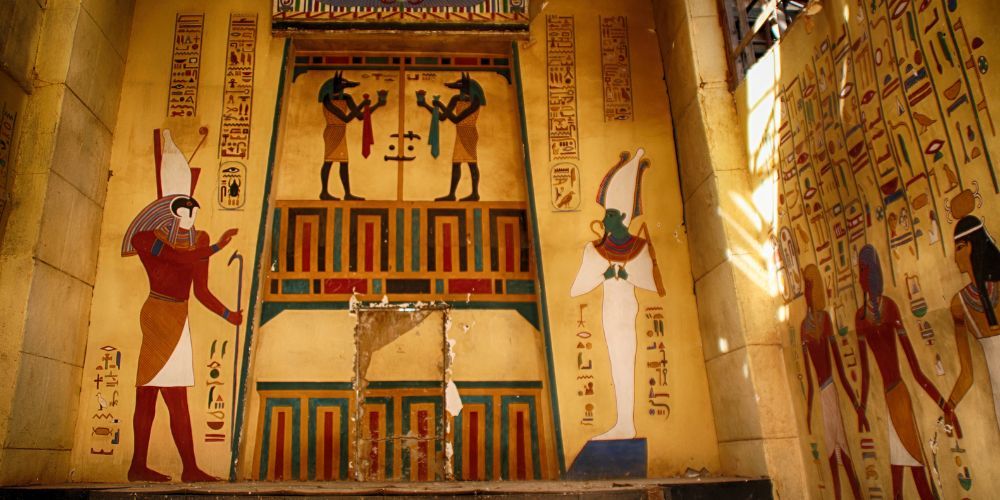
Egyptian Museum, detail of the rooms
The top cultural destination in Turin is undoubtedly the Egyptian Museum, which this year celebrates 200 years of activity. It was the first museum dedicated to Egyptian civilization and still today it is second only to that of Cairo in terms of quantity and quality of the finds preserved: mummies and sarcophagi, papyrus and mirabilia, up to the small temple of Ellesiya, donated by the Egyptian government in 1970 and recomposed here. Last year, from Good Friday to Easter Monday it attracted 18,682 visitors and in all of 2023 it exceeded 900 thousand visitors.
The common thread that links Turin to the Egyptians has legendary origins, which date back to the myth of Eridanos and the first foundation of the city. Having escaped from Egypt 1500 years before Christ, he landed in Liguria and then went towards the place where he saw a river that reminded him of the Nile. It was Eridanos who introduced the cult of the god Apis, depicted as a bull, hence the symbol and name of the city itself.
4. Doge's Palace in Venice
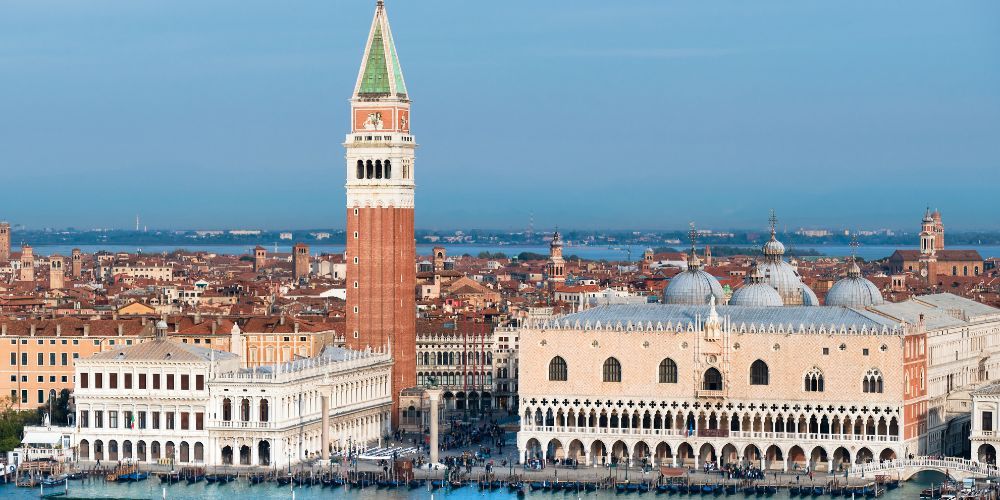
Doge's Palace in Venice and, on the left, the bell tower of San Marco
East and West, power and the "piombs" (the Venetian prisons), the doge as sovereign but also bishop. These are the contrasts that have made Venice a unique city in the world, a powerful and beautiful magic on the water. Overlooking Piazza San Marco and the lagoon, the Doge's Palace is the symbol of this mixture of values, with Byzantine motifs marrying Gothic architecture. Last year it welcomed one million and 240 thousand visitors and the Venetian Easter was too crowded.
Built on the ashes of an ancient medieval castle, the Palace was originally called Dogale (as seat of the Doge) and then the lexicon transformed it into Ducale. It has undergone various reconstructions, also due to disastrous fires, until its current identity which can be traced back to 1340. Today it is part of the complex of the Civic Museums of Venice and houses the Picture Gallery with works by Bellini, Titian, Tintoretto and Tiepolo. And from the Palace you can also reach the prisons of Venice, the very sad Piombi, through a narrow corridor on the canals known as the Bridge of Sighs.
Among the most visited places in Italy, Venice and the center of Piazza San Marco with the bell tower and Palazzo Ducale is always very crowded at Easter. If there is no shortage of alternatives, the characteristic islands of the lagoon are just waiting to be discovered.
Discover the magic of Venice and the secrets of the Doge's Palace3. Pompeii archaeological park
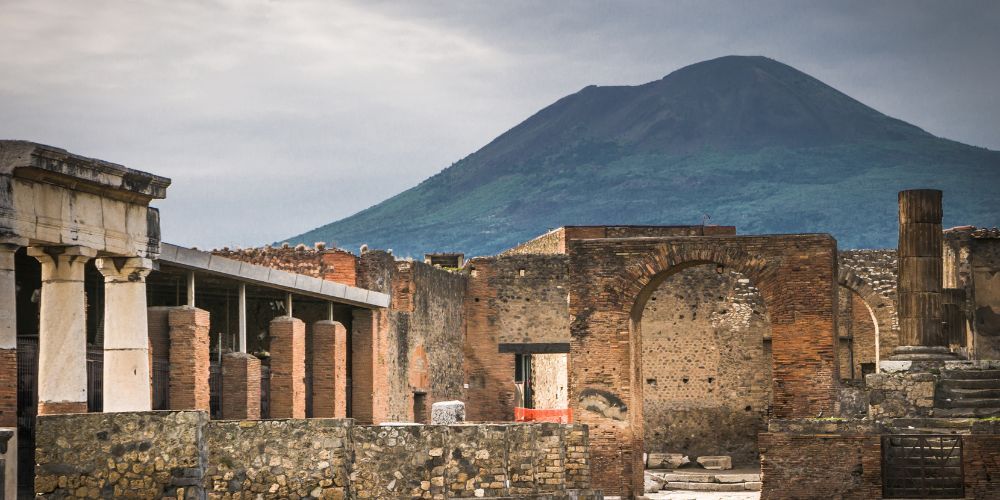
The archaeological area of Pompeii and Vesuvius in the background
It is the largest archaeological site in the world, the top cultural destination for every foreigner visiting the Belpaese. Pompeii attracts enthusiasts of ancient history and those curious about how people once lived, lovers of beauty and the private "vices" of Roman homes. In the four days from Good Friday to Easter Monday 2023 there were around 67 thousand admissions, three out of four foreigners, but the Pompeii excavations marked the boom at the end of the year: 4,076,022 admissions! For the first time above 4 million in a single year.
The Archaeological Park under the Vesuvius will continue to expand, already today including the areas of Oplontis, Stabiae and other sites. Without forgetting Herculaneum and the National Archaeological Museum of Naples (Mann), which preserves most of the finds found in Pompeii, and both Herculaneum and the Mann welcome around 3,000 visitors a day. A new educational center for children, the Children museum, will soon open in Pompeii, with workshops and spaces for children.
2. Uffizi Gallery in Florence
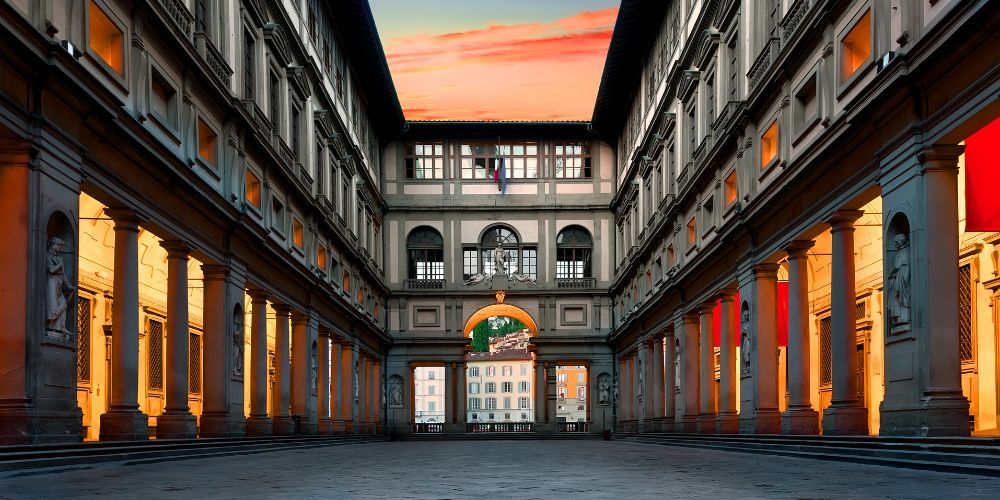
The Uffizi Gallery
Booking is a must. The Uffizi are Italy's flagship museum, visiting them means having seen the best of Italian art, and not just Renaissance art as is believed, because we start from Giotto and arrive at the modern era. Last year on Easter Sunday alone there were 11,287 entries, a little less on Easter Monday which however is more dedicated to trips out of town. But at the end of 2023 the Uffizi Gallery exceeded 5 million visitors! In the world the museum is second only to the Louvre.
A success that explains how, in the name of the Uffizi, a museum center was created in Florence which also includes Palazzo Pitti and the Boboli Gardens (over 10 thousand visitors here on Easter Monday). Returning to the Gallery, the 6 masterpieces not to be missed are Leonardo's Annunciation, Raphael's Madonna of the Goldfinch, Titian's Venus, Judith beheading Holofernes by Artemisia Gentileschi and Botticelli's Spring and Venus.
1. Colosseo, Roman Forum and Palatine
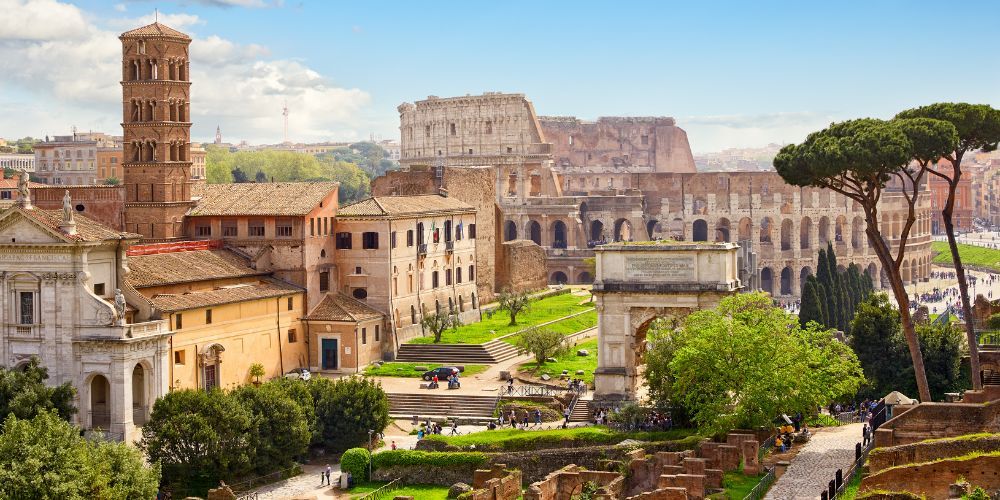
Colosseum and Roman Forum
Rome attracts an impressive number of tourists at Easter and it is obvious that crowds of visitors queue to admire its masterpieces and treasures in these days. The Colosseum confirmed itself last year as the most visited Italian monument on Easter Sunday with 27,647 entries, but the Roman Forum and the Palatine also did very well, recording 15,977 on the same single day. Also considering Easter Monday, the complex recorded over 80 thousand visits!
Strong numbers and hard management, the Colosseum attracts an average of 7 million visitors a year, a third of which are concentrated in the three summer months. Wise management is needed, but on the other hand Rome is a city that never stops being discovered. This also applies to the Vatican Museums, not included in our list because they belong to Vatican City. The advice is therefore to look for different but always wonderful things around the Eternal City, but also in the rest of Italy.
Now let us recommend some more places to visit at Easter in Italy that deserve to be counted among the top destinations in the Belpaese.
5 fascinating alternatives to the most visited sites in Italy at Easter and Easter Monday
As wonderful and popular as they are, the sites and attractions we have listed will be stormed by tourists and visitors. As we anticipated, if you plan to visit any of the 10 most visited attractions on Easter and Easter Monday, be prepared for likely long lines and waits.
If the idea of spending Easter and Easter Monday in very crowded places does not appeal to you, Italy offers just as many good alternatives. Indeed, these holidays can be an opportunity to visit fascinating but less popular places, which for that very reason, allow you to enjoy a slower, deeper and quieter visit. Here are our 5 fascinating suggestions.
5.Royal Villa of Monza

Royal Villa in Monza
A few kilometers from Milan and easily reachable by train, bus and car, there is Monza and its beautiful Villa Reale. Wanted by Empress Maria Teresa of Austria as a summer residence for her son Ferdinand, it was built in a very short time from 1777 to 1780 in clear neoclassical forms. A few years later - it was 1805 - Napoleon defeated the Austrians and was crowned King of Italy in Milan. He transformed the residence in Monza into a palace and added the park: 720 hectares which make it the largest urban park in Europe.
With the unification of Italy the Palace ended up in the hands of the Savoy family and it was precisely in Monza that King Umberto I was killed in 1900. Today the complex houses the Royal Villa with 28 rooms that can be visited, the splendid Gardens with the lake and Neptune's Grotto and the grandiose park, now available to citizens who carry out sporting activities there. One of its sides then runs alongside the famous racetrack Circuit of Monza, where the Formula 1 Italian Grand Prix takes place in September.
4. Villa Pisani and the residences of the Brenta Riviera
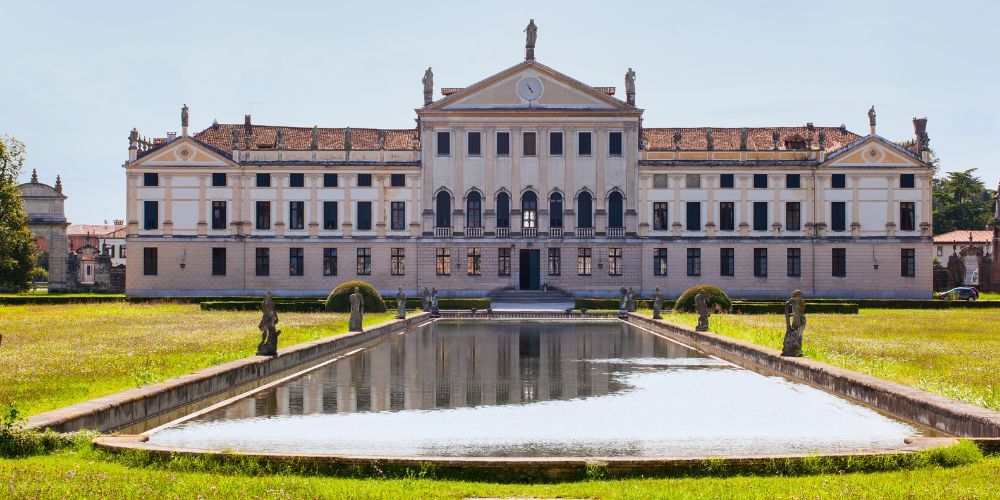
Villa Pisani in Stra, along the Brenta Riviera
Speaking of Napoleon, it was the King of Italy who purchased Villa Pisani in 1807 - the queen of the villas on the Brenta Riviera - from the noble Venetian Pisani family of Santo Stefano. We are in Strà, a few minutes from both Padua and Venice, along the wonderful Riviera of the Brenta river, chosen as a holiday resort for the Venetian nobility. Among the other residences to see, Villa Foscarini Rossi, Villa Widman in Mira and Villa Foscari, known as “La Malcontenta”, built according to designs by Palladio.
Dating back to the 17th century, Villa Pisani boasts something like 114 rooms, which have hosted doges, kings, emperors and tsars. The fresco “Glory of the Pisani family” is the work of none other than Gianbattista Tiepolo and stands out on the ceiling of the royal Ballroom. D'Annunzio set some pages of the novel "Il Fuoco" in this villa and Pasolini shot some scenes of the movie "Porcile" there.
Fiesole and Villa of Maiano
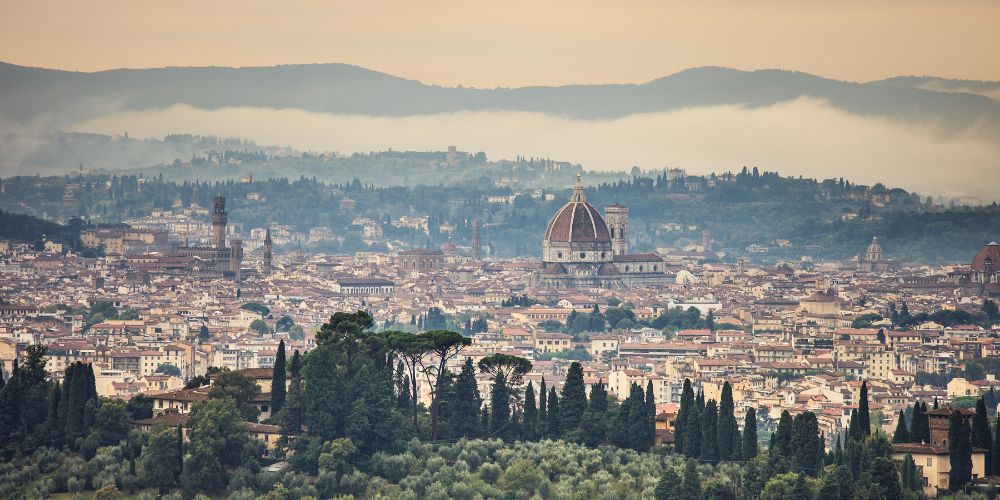
View of Florence from Fiesole
To admire Florence in all its beauty you have to go up to… Fiesole. The town, just 6 kilometers from the capital, offers the best balcony overlooking Brunelleschi's dome and Palazzo Vecchio. From the central Piazza Mino, where a visit to the Cathedral consecrated to San Romolo is unmissable, you can reach the viewpoints over Florence in a few minutes, as well as reaching the top of the hill of San Francesco. There are many prestigious villas, such as Villa San Michele, Villa Schifanoia, home of the European University Institute, Villa Sparta, former residence of the Greek royals.
A city with a thousand-year history, Fiesole preserves a Roman Theater in almost intact condition and which still enlivens the Fiesole summer today. At the top of Via Vecchia Fiesolana there is the Queen's Bench, so called because Queen Victoria of England loved to sit there during her stay in Florence in 1888. Perhaps this is why the English love Fiesole so much, so much so that some of the scenes in the film "A Room with a View” (from the novel by the British writer E.M. Forster) were filmed at Villa di Maiano in Fiesole. Villa which with its furnishings also returns in Assassin's Creed II, a cult for video game enthusiasts.
2. Villa Gregoriana in Tivoli
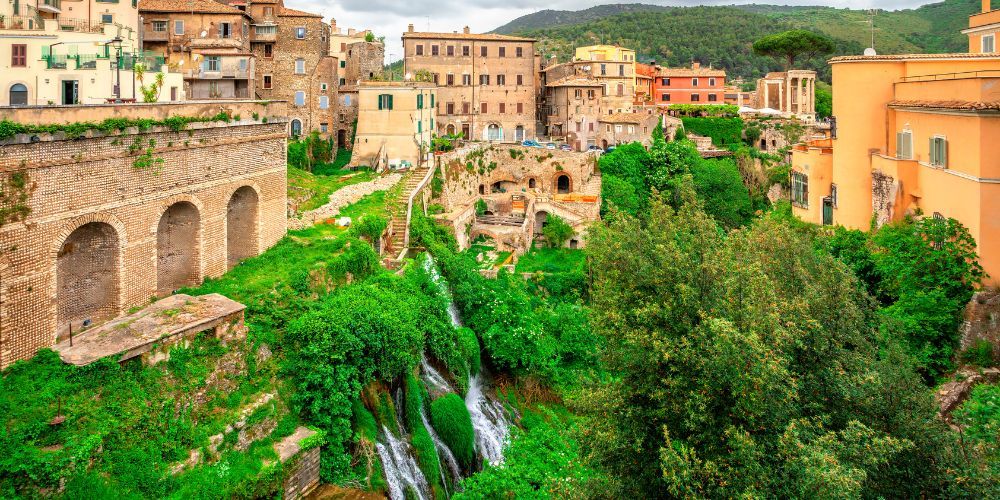
Villa Gregoriana in Tivoli
Tivoli is the Romans' favorite place for Easter Monday. With their fountains and water features, the historic Villa d'Este and Villa Adriana are included in the list of UNESCO world heritage sites, but since 2005 Tivoli has had a third, large villa to discover together with its great park: Villa Gregoriana. A masterpiece of hydraulic engineering and a combination of ancient art (with Roman remains found) and naturalistic area, with waterfalls up to 120 meters high.
Commissioned by Pope Gregory XVI in 1832 to stem the fury of the Aniene river (whose floods were disastrous), Villa Gregoriana succeeded so well that the Pope himself wanted a lush park, a destination for artists, writers and men of culture throughout the 19th century. Then the decline and abandonment, until the State Property Agency gave it under concession to the Italian Environment Fund (FAI) which restored the Villa and Park, reopening it to the public in 2005.
1. Baia Castle and Campi Flegrei archaeological park
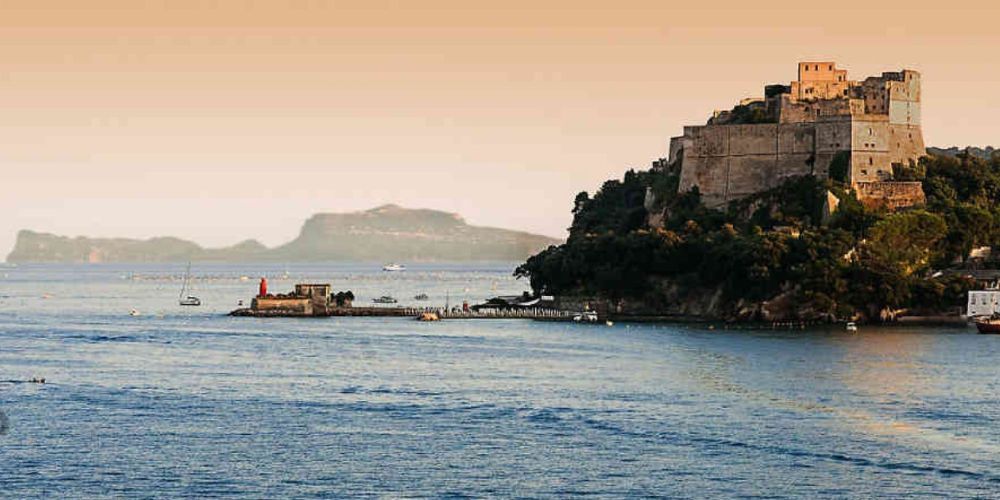
The Aragonese Castle of Baia and, in the background, the island of Capri
A few kilometers from Naples there is Baia and its archaeological park from the Roman era, part of which is submerged and therefore more evocative. Baia can be reached from the center of Naples, at Piazzetta Montesanto, with Metro Line 4 (better known as Cumana), which crosses the Campi Flegrei to the beaches of Lucrino ‒ behind which there is the legendary and "infernal" Lake Averno ‒ and of Torregaveta in the municipality of Bacoli.
The museum corpus of Baia and Campi Flegrei is located in the Aragonese Castle, which dates back to the 15th century and is perfectly preserved despite the intense telluric activity of the area. It was built on the remains of a Caesarian villa from the 2nd century BC, when Baia invited Roman artists and patricians with its spas and pleasures. Today it houses the Archaeological Museum of the Phlegraean Fields, with findings from the areas of Cuma, Puteoli and Liternum, and from the spectacular Piazza d'Armi you can admire a fantastic view of the entire Gulf of Naples. Below the castle there is a delightful little beach, reachable only by sea.
About the author
Written on 21/03/2024


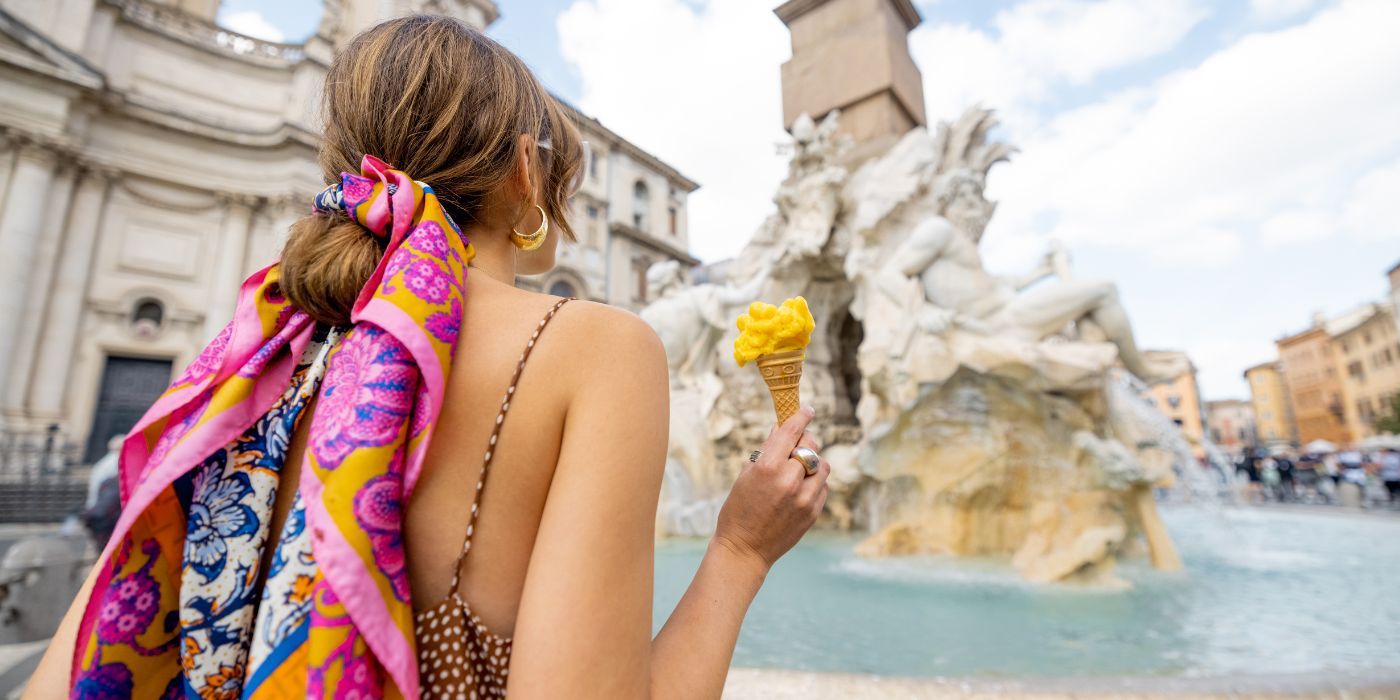
Antonio Angione
What are the 10 most visited sites and museums in Italy at Easter and Easter Monday? Here's a list of the most touristy + 5 less crowded alternatives.